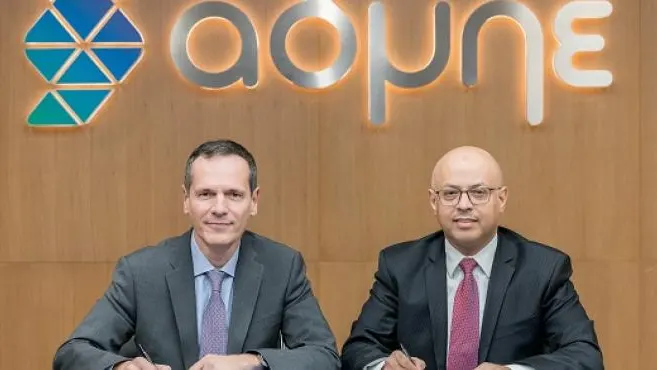OMNI Features|Saudi Arabia and Greece Form SPV for Interconnection Project / Siemens Gamesa Awards First SOV Contract in Asia to Cyan Renewables / Germany Researchers Create Green Steel From Toxic Red Mud
OMNI Features|Saudi Arabia and Greece Form SPV for Interconnection Project / Siemens Gamesa Awards First SOV Contract in Asia to Cyan Renewables / Germany Researchers Create Green Steel From Toxic Red Mud
 圖片來源: IPTO
圖片來源: IPTO
|Saudi Arabia and Greece Form SPV for Interconnection Project
Saudia Arabia and Greece established a special purpose vehicle (SPV), Saudi Greek Interconnection, to lead the feasibility study for the two countries' electricity interconnection.
In a statement, Greece's Independent Power Transmission Operator (IPTO) and Saudi Arabia's National Grid said they will both hold a 50% stake in Saudi Greek Interconnection. The special purpose firm will be overseen by the markets’ respective energy ministries.
“The Saudi Greek electricity Interconnection which will interconnect for the first time Saudi Arabia with the European continent, is the beginning of strengthening the Kingdom and European interconnection towards energy transition and utilization of Renewable Resources as the two countries stressed the importance of strategic cooperation between them in a number of issues of common interest in the field of energy, including the generation of electricity using renewable energy, the establishment of the power grid, and the export of electricity produced using renewable energy to Greece, and to Europe via Greece,” said National Grid CEO and the SPV's Chairman of the Board Waleed Al-Saadi said.
|Siemens Gamesa awards first SOV contract in Asia to Cyan Renewables
Siemens Gamesa Renewable Energy has awarded a 15-year charter contract to Cyan Renewables for its first service operation vessel (SOV) in Asia. The contract will begin in 2026 and the SOV will be used to service 73 Siemens Gamesa SG 14-222 DD offshore wind turbines in the Hai Long offshore windfarms, which are located approximately 50 km off the coast of Changhua County in Taiwan.
Cyan Renewables' SOV will have Siemens’ BlueDrive PlusC propulsion system for optimal energy efficiency while minimising its environmental footprint. The vessel will also be designed to ensure the safe transport of service technicians year-round to maintain the Hai Long wind turbines. Construction of the SOV is expected to begin in Q1 2024.
|Germany Researchers Create Green Steel From Toxic Red Mud
The aluminum industry produces around 198 million tons (180 million tons) of bauxite residue –'red mud'– yearly, which is extremely corrosive because it has high alkalinity and is rich in toxic heavy metals. In countries such as Australia, China and Brazil, the leftover red mud is usually disposed of in gigantic landfills, with high processing costs. The steel industry is equally environmentally damaging, responsible for 8% of global carbon dioxide emissions. Yet, the demand for steel and aluminum is forecast to increase by up to 60% by 2050.
However, scientists from the Max-Planck-Institut für Eisenforschung, Germany, a center for iron research, may have a solution to turn the toxic red mud by-product left over from aluminum production into green steel.
Red mud consists of up to 60% iron oxide. Melting the mud in an electric arc furnace using a plasma containing 10% hydrogen reduces it to liquid iron and liquid oxides, allowing the iron to be easily extracted. The plasma reduction technique takes 10 minutes and produces iron so pure, say the researchers, it can be processed directly into steel. And the no-longer-corrosive metal oxides solidify on cooling, so they can be transformed into glass-like material that could be used as a filling material in the construction industry.
The researchers say that producing iron from red mud directly using green hydrogen benefits the environment “twice over" and is economically beneficial. Using their calculations, if the red mud contains 35% iron oxide, this is enough to make the process economical. Taking the cost of green hydrogen and electricity to power the arc furnace at today's prices and including the cost of landfilling the red mud, a proportion of 30% to 40% iron oxide in the mud would be needed for the resulting iron to be competitive in the market.
Reference: IPTO|Riviera|NEWATLAS
